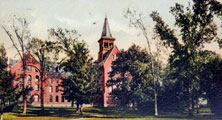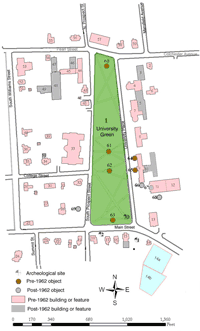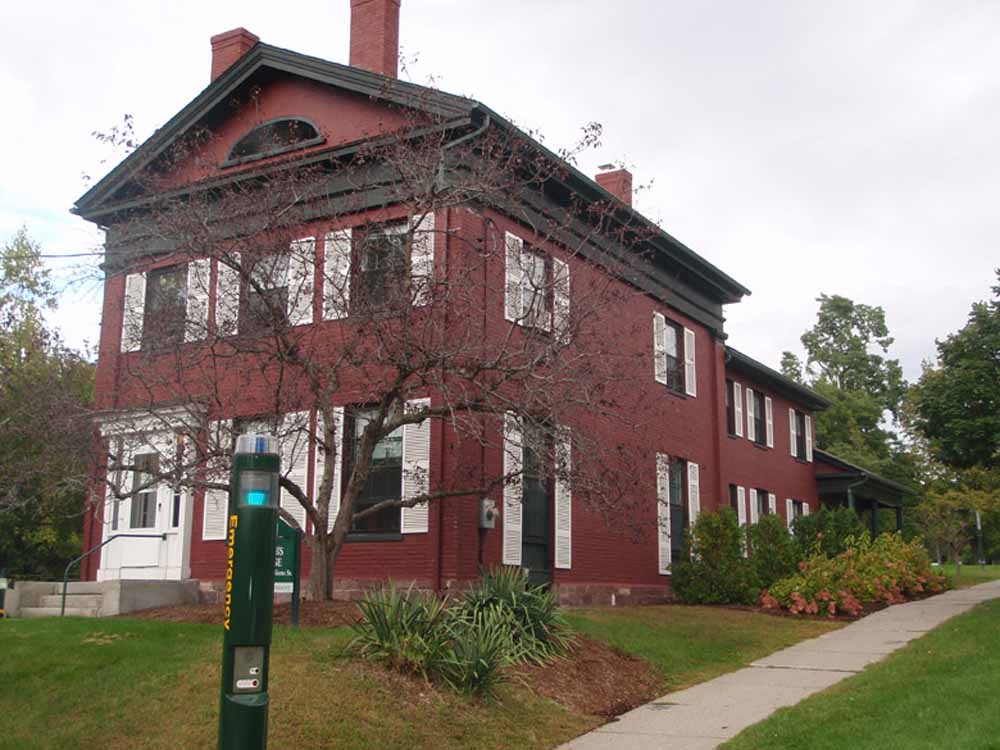 |
University Green Area Heritage StudyHistoric Burlington Research Project - HP 206Historic Preservation Program - University of Vermont |
Nabb-Jacobs House146 South Williams Street
The Nabb-Jacobs house is a two and a half story brick-veneered Greek Revival house that was constructed circa 1850. The house presents as a gable front house on the northwest corner South Williams Street and Main Street. It was constructed in three successive phases. The earliest structure is on the western most end of the property. The west façade, which incorporates the original main entrance to the residence, has a gable end orientation to South Williams Street. The house has terrific examples of Greek Revival elements including Doric columns, a full entablature, Greek moldings, a wide frieze, and the corners of the house are articulated as engaged columns.
Text by Andrew Evick, 2011 (1) David Blow, Historic Guide to Burlington Neighborhoods (Burlington, VT: Chittenden County Historical Society, 1991), 117. (12)Image from Charles Sumner Lord, Round About Burlington, VT (Winooski, VT: Vermont Illustrating Co., 1900), 50.
|


 Bishop William Russell. Died May 14, 1893. (12)
Bishop William Russell. Died May 14, 1893. (12)